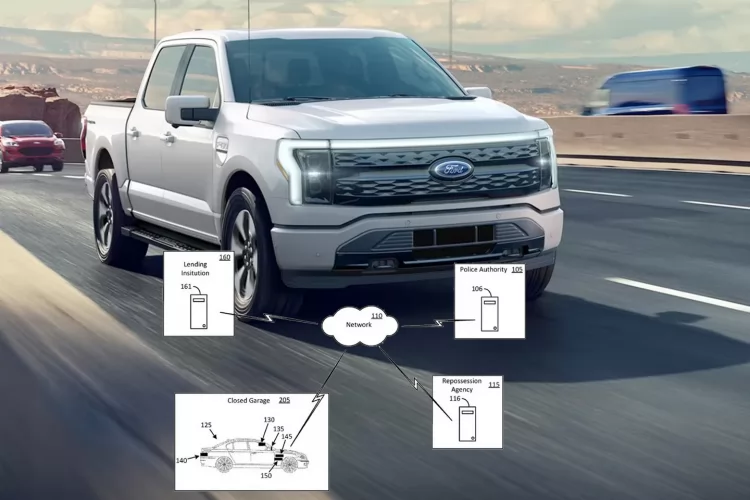With the rapid advancement of technology, over-the-air updates have emerged as a game changer in the automotive industry, making your car’s software increasingly vital. These updates allow you to receive enhancements and fixes without visiting a dealership, ensuring your vehicle operates at its optimal performance. As vehicles become more connected, you may find that software capabilities can enhance safety features, improve fuel efficiency, and even extend the life of your car. Understanding the importance of these updates could significantly impact your driving experience.
Key Takeaways:
- Software innovation is driving the automotive industry, as cars become more reliant on advanced coding and electronic functions.
- Over-the-air updates improve vehicle performance and features without requiring physical service visits, keeping cars updated in real time.
- Security enhancements can be implemented regularly via software updates, protecting vehicles from cyber threats and improving user confidence.
The Evolution of Automotive Software
Before stepping into the present state of automotive technology, let’s take a moment to reflect on the historical perspective of automotive software. The evolution of software in vehicles began in the late 20th century when cars were primarily mechanical machines. The integration of software in vehicles started with the introduction of Engine Control Units (ECUs) in the 1980s, which helped optimize engine performance and fuel efficiency. As vehicles became more complex, so did the software that controlled various systems, from anti-lock brakes to airbag deployment, significantly enhancing safety and performance.
Historical Perspective
Evolution continued through the 1990s and early 2000s as manufacturers began incorporating more sophisticated systems. The introduction of infotainment systems allowed drivers to access music, navigation, and even phone calls within their vehicles. These early systems laid the foundation for what we now take for granted: the seamless interaction of software with your driving experience. As you can see, your car’s software transitioned from performing important functions to enhancing your overall driving pleasure.
The Shift Towards Digital Connectivity
After the initial adoption of basic automotive software, you may have noticed a significant shift towards digital connectivity in recent years. The rise of the internet and mobile technology has enabled vehicles to connect to networks, allowing real-time updates, diagnostics, and services remotely. Your vehicle is now not just a mode of transportation; it’s becoming a connected device that communicates with various external sources. This transition is paving the way for features like navigation updates, software enhancements, and even autonomous driving capabilities.
But this shift also presents some challenges and risks. The increased reliance on software means that issues like cybersecurity vulnerabilities have become a genuine concern. With cars being able to connect to your home network or the internet, they can also become targets for malicious attacks. This reinforces the importance of keeping your vehicle’s software up to date, as prospective hackers may exploit outdated systems. Understanding these changes allows you to appreciate the evolving landscape of automotive technology and ensures you remain aware of how to protect your investment.
The Rise of Over-the-Air Updates – Understanding Over-the-Air (OTA) Updates
Clearly, the automotive landscape is evolving rapidly, especially with the integration of technology into vehicles. Over-the-Air (OTA) updates refer to the process of wirelessly transmitting software enhancements and fixes directly to your vehicle’s systems without the need for a physical connection. This process uses cellular, Wi-Fi, or satellite networks to deliver the updates while you’re on the road or parked at home. As a result, your car can receive critical updates similar to how your smartphone updates apps seamlessly, enhancing its features and performance.
Definition and Mechanism
About the definition, OTA updates are a method of delivering automotive software updates remotely. It enables manufacturers to make enhancements or fixes that affect various systems in your vehicle, from infotainment systems to engine management software. The mechanism behind this process leverages the communication technologies embedded in your vehicle, allowing software to be downloaded and installed automatically. When an update becomes available, your car will notify you, and you may have the option to initiate the process at your convenience.
Benefits of OTA Updates
Any vehicle owner can appreciate the multitude of benefits that come with OTA updates. First and foremost, they provide you with the opportunity to improve your vehicle’s performance without needing to schedule a service appointment at a dealership. This not only saves you time but also enhances your driving experience with improved functionality. Furthermore, OTA updates can ensure your vehicle’s security systems are always up-to-date, addressing any vulnerabilities that may arise as technology advances.
Understanding the implications of OTA updates means recognizing that they extend beyond mere convenience. Regular software updates can bolster your vehicle’s safety features by addressing previously discovered bugs or flaws, thus enhancing your safety on the road. Additionally, with the pace at which technology evolves, your car can remain competitive with newer models through incremental updates that bring new features directly to your dashboard without the need for a new purchase. Embracing OTA updates signifies that your vehicle isn’t just a means of transport; it’s an evolving platform built to adapt and improve over time.
The Importance of Software in Modern Vehicles
Once again, the role of software in your vehicle has become a focal point for manufacturers and consumers alike. As vehicles evolve into complex networks of smart technology, the importance of software cannot be overstated. Your car’s software is responsible for everything from engine performance to infotainment systems, making it a vital aspect of your driving experience. This means that the functionality of your vehicle increasingly relies on updates and improvements in software, elevating it to a position that could surpass even the mechanical aspects of your engine.
Enhanced Functionality and Features
Functionality has transitioned from being merely mechanical to much more than that; it’s now primarily powered by software. Over-the-air updates can introduce new features to your vehicle, refining existing capabilities or even adding entirely new functionalities. For instance, your vehicle might gain enhanced driver-assistance systems or updated navigation aids, and all of this can be executed seamlessly through software without the need for a dealership visit.
Moreover, these updates keep your vehicle aligned with the latest technological advancements, which means your car can remain competitive and continue to meet your needs as time goes on. This constant evolution represents a shift in how you experience ownership, where your vehicle not only meets your current expectations but grows with you over time.
Safety and Security Implications
Vehicles today are equipped with a plethora of systems that enhance safety, and software plays a central role in this domain. Features like automatic emergency braking and adaptive cruise control rely heavily on real-time data processing through software algorithms. Therefore, timely software updates are vital in ensuring that these safety features function correctly and remain up-to-date with the latest safety standards.
With the increasing connectivity of vehicles, software also opens up new avenues for threats that could compromise your car’s security systems. You should be aware that manufacturers are continually working to reinforce the software against potential cyber threats. When your vehicle receives an update, it often contains imperative patches that safeguard you and your passengers from vulnerabilities that could be exploited by malicious actors.
Impact on Vehicle Performance
Security is not the only concern—software directly impacts the performance of your vehicle. An efficient software program can optimize your engine’s fuel efficiency, enhance acceleration, and improve the overall driving experience. Timely updates allow for real-time adjustments that can enhance the power delivery and efficiency, ensuring your vehicle runs at its best.
Software also allows for customizable settings that can adapt to your driving style, providing you with a more personalized experience. This means that your car can adjust the throttle response based on whether you prefer a more aggressive or a fuel-efficient drive. In short, the way your vehicle performs on the road is increasingly intertwined with the sophistication of its software.
Software updates are not just minor tweaks; they hold the power to transform your driving experience. As technology continues to evolve, staying informed about the implications of these updates will enable you to fully leverage the advantages they bring.
The Future of Automotive Software and OTA Updates
After witnessing the rapid evolution of automotive technology, it’s clear that the software embedded in your car is becoming increasingly significant—often outweighing the importance of traditional mechanical components. As vehicles transform into software-driven platforms, What Are Over the Air Updates for Cars? will define your driving experience, given their immense capability to enhance performance, safety, and user experience over time.
Trends Shaping the Industry
Around the globe, the automotive industry is adopting new trends that shape how you interact with your vehicle. The push towards electric and autonomous vehicles is driving software development at an unprecedented pace, ensuring that your car remains updated with the latest functionalities and safety features. Furthermore, personalization is at the forefront of these technological advancements, providing tailored driving experiences that suit your preferences and habits.
Another significant trend is the integration of artificial intelligence and machine learning, which is poised to enhance your car’s capabilities. These technologies can analyze data from various sources to optimize performance and even offer preventative maintenance notifications. This ensures that your vehicle is not only up to date, but also reliable and responsive to your needs as a driver.
Potential Challenges and Solutions
Industry experts acknowledge that the rise of over-the-air (OTA) updates isn’t without its challenges. You may encounter issues such as cybersecurity threats and the risk of software malfunctions due to complex updates. Ensuring that your vehicle’s software is secure is both a responsibility of manufacturers and a concern for drivers like you.
The key to addressing these potential threats lies in developing robust cybersecurity measures and maintaining transparent communication between automakers and consumers. For your peace of mind, auto manufacturers must continuously invest in securing their systems against unauthorized access while educating users on safe practices. As OTA technology advances, you can expect more sophisticated solutions that will enhance the reliability and safety of your vehicle’s software. By staying informed and vigilant, you can enjoy the benefits of these updates while minimizing risks to your driving experience.
Final Words
Following this insight into the rise of over-the-air updates, you can appreciate that the software within your vehicle is becoming increasingly crucial to its overall performance and functionality. These updates not only enhance existing features but also introduce new capabilities, ensuring that your car stays at the forefront of technology long after you drive it off the lot. The ability to keep your vehicle up to date means that you can enjoy improvements in safety, efficiency, and connectivity without the need for a visit to the dealership.
As the automotive industry continues to evolve, understanding the advancements in software technology will empower you to make informed decisions when purchasing and maintaining your vehicle. The relationship between you and your car is no longer solely defined by the engine’s power but increasingly influenced by the software that controls everything from navigation to safety systems. Embracing this shift will enable you to leverage the full potential of your vehicle’s capabilities, ensuring a more rewarding and secure driving experience.
Q: What are over-the-air (OTA) updates and how do they work in vehicles?
A: Over-the-air updates are remote software updates that can be delivered to a vehicle without the need for a physical connection to a service station. Car manufacturers can send these updates via Wi-Fi or cellular networks directly to the vehicle’s onboard computer. This process allows manufacturers to fix bugs, enhance features, and improve vehicle performance without requiring owners to bring their cars in for service. Essentially, once the vehicle is connected to the internet, it can download and install software improvements automatically or at a scheduled time, ensuring that the vehicle remains up-to-date with the latest technology.
Q: Why are software features increasingly significant compared to traditional automotive features like the engine and transmission?
A: As technology advances, software has become fundamental in enhancing the driving experience and vehicle functionality. Modern vehicles rely on software to control various systems such as navigation, safety features, entertainment, and even performance enhancements. Software enables features such as adaptive cruise control, lane assist, and infotainment systems that can be updated over time. Consequently, a vehicle’s software can significantly impact its safety, efficiency, and user experience, often making it more valuable than the traditional aspects of the vehicle, such as the engine and transmission. Automakers are discovering that the ability to continually improve the vehicle through software updates adds more long-term value to the car model than static mechanical components.
Q: What are the potential benefits and challenges of relying on OTA updates for car software?
A: The benefits of OTA updates include improved convenience for the owner, enhanced vehicle features without service visits, and the ability for manufacturers to respond quickly to emerging issues or customer feedback. This fosters a more responsive relationship between manufacturers and vehicle owners. However, challenges include ensuring cybersecurity to protect against hacking, maintaining the integrity of the updates to prevent malfunctions, and managing the compatibility of the software with various hardware. There is also the potential for owners to face issues during the update process, such as loss of functionality if an update fails or introduces bugs. Balancing innovation with security and reliability remains a significant focus for manufacturers offering OTA capabilities.



